Last o'Lima
"Do every act of your life as if it were your last." - Marcus Aurelius, Roman leader
Let me finish off with the last spots in Lima, and a round-up of the whole trip. Pretty please?
It was time for a late breakfast. And nearby was a place much touted for its breakfast sandwiches. A digression - in my experience, many, if not most, Peruvians seem to consider sandwiches to be a breakfast food, rather than a lunch food. While certainly the majority of sangucherías stay open through the lunch hour and into the afternoon, there are many places that don’t, or that change their menus, as the day wears on. I wandered over to S’Concha, Jirón Leoncio Prado 645, in Surquillo, one of three outlets of this mini-chain. I think this might be the original, there’s also one close by in Miraflores (much fancier) and another in Lince.
It’s a true hole-in-the-wall, with a small corridor by the kitchen as you enter, and a couple of tables there, plus a small dining area at the back with maybe another six tables. Being around 11 a.m., I’d just squeaked in for breakfast, with sandwiches on offer until noon, at which time they are no longer available, and instead, a variety of seafood stir-fries and fried fish dishes take the stage.
There are three menu items available - all are two-sandwich “promos” - either two fried pejerrey, a coastal “silverside” fish, or two hueveras, fried fish roe, or one of each. Really, there’s a fourth option, as when I ordered the one of each promo, I was given the option of one of each, or two mixed. The waitress recommended one of each. In retrospect, I think I’d recommend two mixed.
Light, airy rolls, a mound of the fried goodies, parmesan mayo, cebollita (slivered red onions dressed with lime juice, salt, and cilantro), and, on request, a little dish of ajicito, rocoto hot salsa. Which, of course, I requested. I expected to like the roe more than the pejerrey, but it turned out the other way around. Both were delicious, and filling enough that the idea of lunch never came up. I had some fruit in the afternoon. Promos run roughly $6 for the two sandwiches. Coffee ($1.50) or juice ($3) extra. I’d already had a small pot of coffee earlier back at the apartment, so went with a fresh papaya juice.
I felt, after my cocktail experience a couple of days earlier at Olé, that I should give the other big cocktail in Lima a try - the pisco sour. Now, I’ve certainly had pisco sours before, and they’re not one of my favorites. Henry loves them, and swears by the one at the Hotel Bolivar. But I wanted to go to the source, Hotel Maury, Jr. Ucayali 201, in the historic center of town.
Now, the story goes that Victor Morris, owner and bartender at nearby eponymous Bar Morris “invented” the drink in the 1920s, putting a spin on a whiskey sour. However, there’s ample evidence that the same basic drink existed long before, in various bars around town. The recipe for it, though just called a Coctél Criollo, is included in a 1903 Peruvian cookbook and is already at that time listed as a classic.
It’s not entirely clear what his twist on it was - maybe just the renaming of it, but it quickly became popular, and supposedly, one of his bartenders, or someone who simply liked his version, began making them at Hotel Maury, where, legend has it, he “perfected” the drink. And, to this day, they claim, they make it exactly as he would have. Well, except maybe that he didn’t keep pitchers of it premixed, and throw a portion in the blender to whip it up to a froth. And pretty much all froth. There wasn’t a whole lot of drink in this drink. Maybe 3-4 swallows, the rest was all air. It was, I have to admit, one of the better tasting pisco sours I’ve had, and I like the addition of cinnamon on top along with the bitters. But still not a favorite cocktail, and a bit disappointing for $8.
There’s an annual list of the “50 Best Pizzas in Latin America” published by a group of Italians who started out publishing “50 Best Pizzas in the World”. The L.A. list includes one, and only one, pizzeria in Peru. Interestingly, the world list, as so many of these 50 best lists does, is really the 100 best, but the one for Latin America is limited to just 50 - well, really, 52, because they have a three-way tie for 50th place. Flama Pizzeria, C. Coronel Inclán 300, Miraflores, clocks in at #11 on the list. But, it comes with a caveat:
Elegant and cozy atmosphere, tastefully decorated mixing the warmth of various shades of wood harmonized with dark red walls, elegantly illuminated with an outdoor area refreshed by the green of plants. The pizza prepared by Louis Bolivar, following the rules of the specification, is soft and melt-in-your-mouth, supported by a well-leavened and light dough. The toppings, mixed with fresh and well-chosen ingredients, are inviting and make each slice delicious and flavorful. Completing the selection are assorted boards of Italian cheeses and cold cuts; inviting dishes of fresh pasta. To finish off sweetly, try the tiramisu or the amaretto cheesecake. The cocktail proposal is interesting; the service in the dining room and the well-organized delivery. As of October 2024, Louis Bolivar is no longer the pizza chef at Flama.
So, with the chef who made the place’s name gone, how does it stack up?
I ordered their meatball and stracciatella pizza. It was good. It was even very good. But I can think of a couple of dozen pizzerias just in Buenos Aires that are better. Has its standards just slipped with the departure of Bolivar? Was it included simply to include somewhere from Peru? Then again, two of the ones on the list from Buenos Aires I don’t even particularly like, and there are plenty of better places than the ones that are on it, so maybe I should just ignore this list. Individual size pizzas run from about $15-18.
I would happily eat there again, but I have trouble imagining that this is the best that Peru, or even Lima, has to offer. Then again, I don’t think I’ve ever been to a pizzeria in Peru before, so, maybe not?
It was my last day, and I was in the mood for gelato. There was a place that numerous people recommended, and it sounded pretty amazing, not far from the apartment. Unfortunately, it turned out to be closed on Mondays (so much for Google’s “verified by phone 17 days ago”). So I went to the next highest rated one that was close by, and open, Amore Mio, Av. la Paz 178, Miraflores.
Limited selection of flavors, but some interesting ones - this is a triple scoop of bitter chocolate, brazil nut, and aguaymanto, the cape gooseberry, or ground cherry. Unfortunately, I was just unimpressed. The gelato is way too sweet, all you taste is sugar, even the bitter chocolate one, and the two other ones were so soft they just melted all over the place in the cup. I didn’t even make it through half of this before just tossing it in the trash. Not worth the $6 cost.
Let’s end on a really positive note!
Having had such a tasty meal at Frina the day before, I thought I’d compare and contrast with another relatively new spot, AWA Restaurante, Av. Mariscal La Mar 463, Miraflores. This one came to me courtesy of a review from Nicholas Gill.
A bit of weirdness at the beginning, as I arrived for a 12:00 reservation to find that they don’t open until 12:30. But they let me sit, and the young chef, Aldo Yaranga, came out to chat with me, and assure me that a) they’d fix the reservation system, and b) that they would actually be ready to start cooking in about 10 minutes, so I wouldn’t have to wait half an hour or more. Service staff were uniformly friendly and welcoming. And, while I’m guessing it’s not a regular occurrence, given that I was the only one there, and he knew who I was, the chef popped out a few times to chat about dishes, ingredients, and restaurant life in general.
Most of the dishes are mid to large size, probably intended to be shared, and I had been hoping to try several appetizers. My waitress, and reiterated by the chef, offered that they could do half size portions of any of the larger plates. One of the ones I particularly wanted to try was this tabla of charcuterie made from the Amazon fish paiche…
These are “small” ones, only being somewhere between a meter and a meter and a half long and around 100kg. Full grown ones can reach two and half meters in length and hit around 200kg. They’re definitely hungry, and they eat by basically inhaling anything in their path like a vacuum cleaner.
These are rolled up fillets of paiche at the Mercado Belén in Iquitos.
Back to the charcuterie, the top row from right to left includes paiche ham, pastrami, and chorizo. Then there’s a pork chorizo made from pigs raised in the Amazon. And all accompanied with housemade pickles, mustard, a mild hot sauce, and caramelized onions (actually caramelized, with sugar, not what we usually think of that are slow cooked browned onions). Served with a crisp whole plantain cracker. Delicious!
The tiradito of the day, slices of fortuna, the fortune jack, a close relative of amberjack, or hamachi, in a leche de tigre made with an acidic Amazon fruit called taperiba, in English, the mango plum, which I gather is vaguely related to passion-fruits. A dot or two of chili oil and herb oil, and a garnish of trout roe and wild arugula complete the dish. Fantastic, especially after I let the fish marinate in the leche for about ten minutes.
Finally! Someone who can cook octopus correctly. Spoon-cutting tender tentacles of octopus over a corn puree, topped with a cocona chutney (cocona is the fruit I mentioned the other day that tastes like a tomato and a lemon had a baby), and macambo seeds, some chopped, a couple whole. The macambo is in the cacao family and is often referred to as white cacao. Yum!
And, finished off with the day’s (week’s?) special of a grilled paiche rib over a light curry sauce, and topped with reduced juices from roasting paiche bones. It’s accompanied by a farofa - toasted dried and coarsely ground yuca root, rice and a native pea to the Amazon, and a salad of pickled vegetables. Another hit.
All of the above plus water and a mocktail (taperiba, cocona, and ginger) for $58.
Let’s round-up the trip over all. What were my top picks? (Interestingly, everything that I reviewed in the previous post to this one.)
Things to do that were new for me - the visit to the Museo Oro, the gold museum was fascinating.
I highly recommend the El Capitán cocktail at Olé. Springing for the certificate, optional.
Stand in line for picarones at Picarones Mary in Parque Kennedy.
The La Royal mini-burger (and the crispy pigs’ ears) at Sutorito Makketo.
And either or both of the last two lunches, at Frina and AWA.
Nikkei style sushi at Shizen and, cautiously, optimistically, at Yakimo.
And now, back to our regularly scheduled Buenos Aires programming.




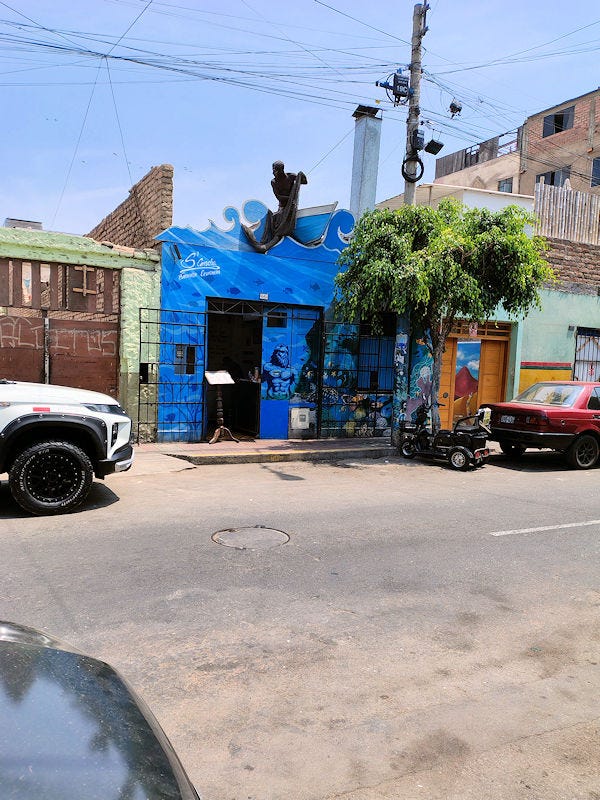
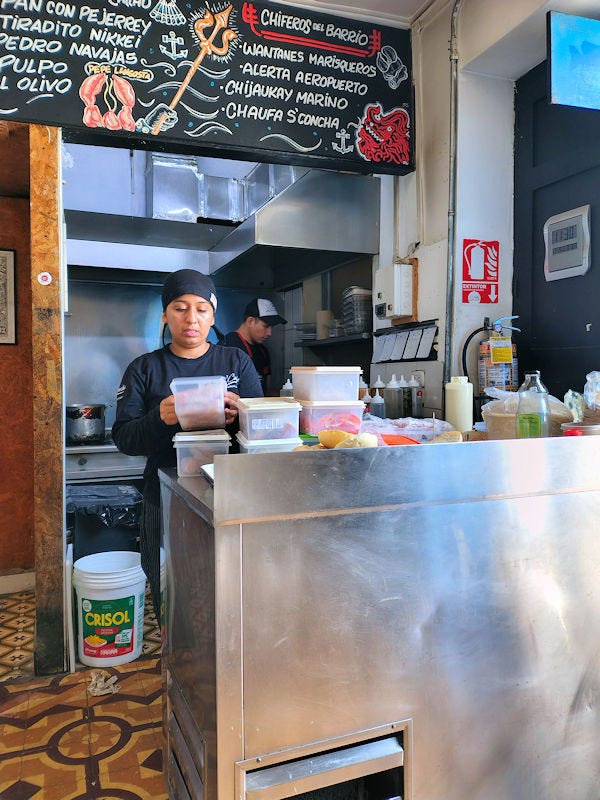
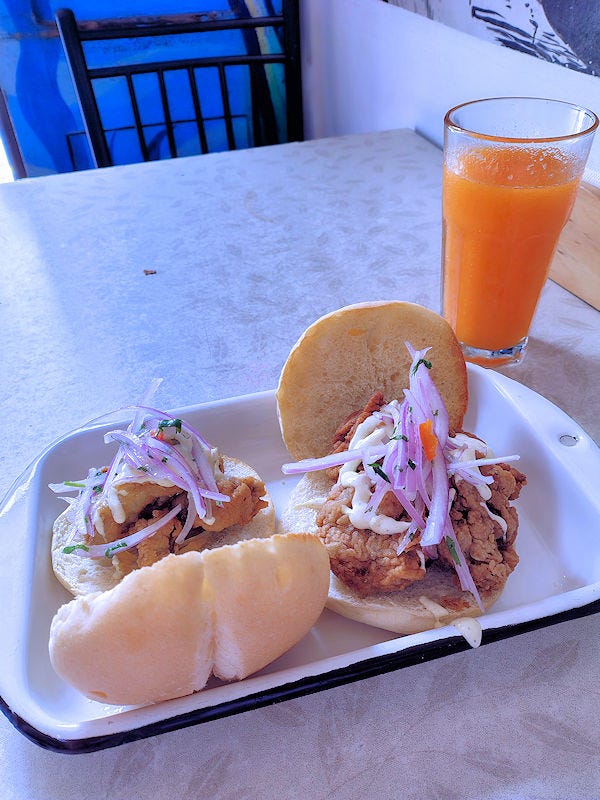
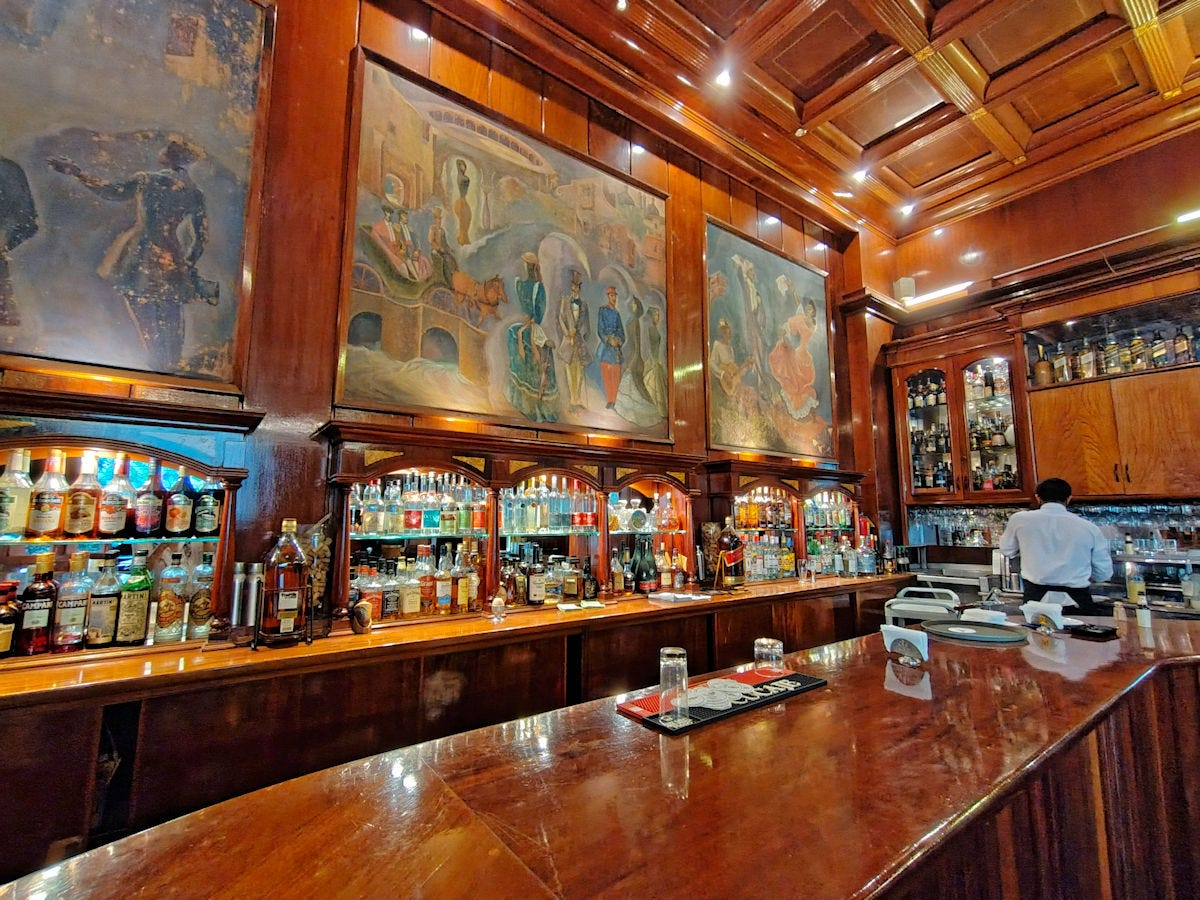
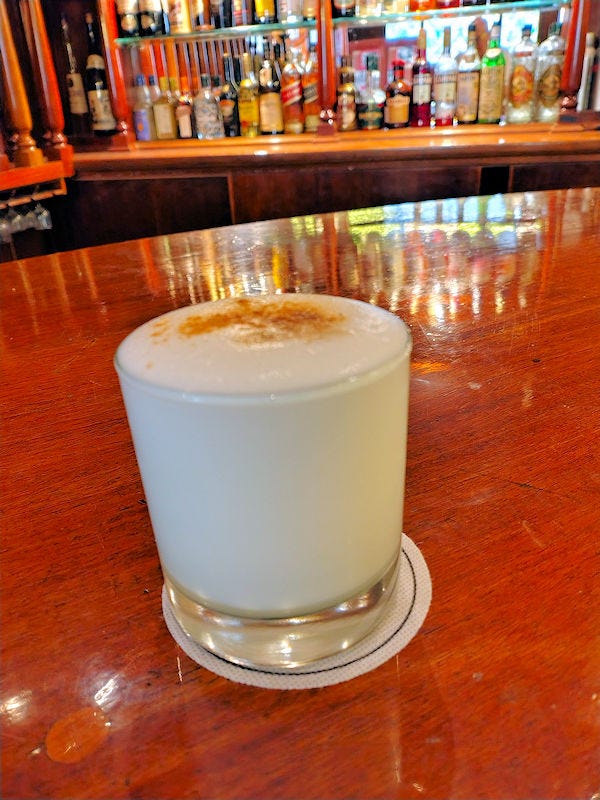
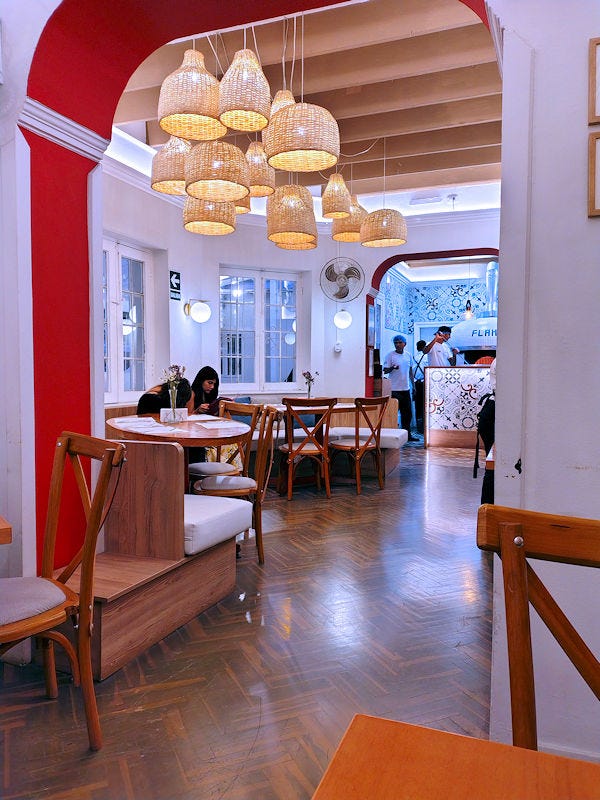
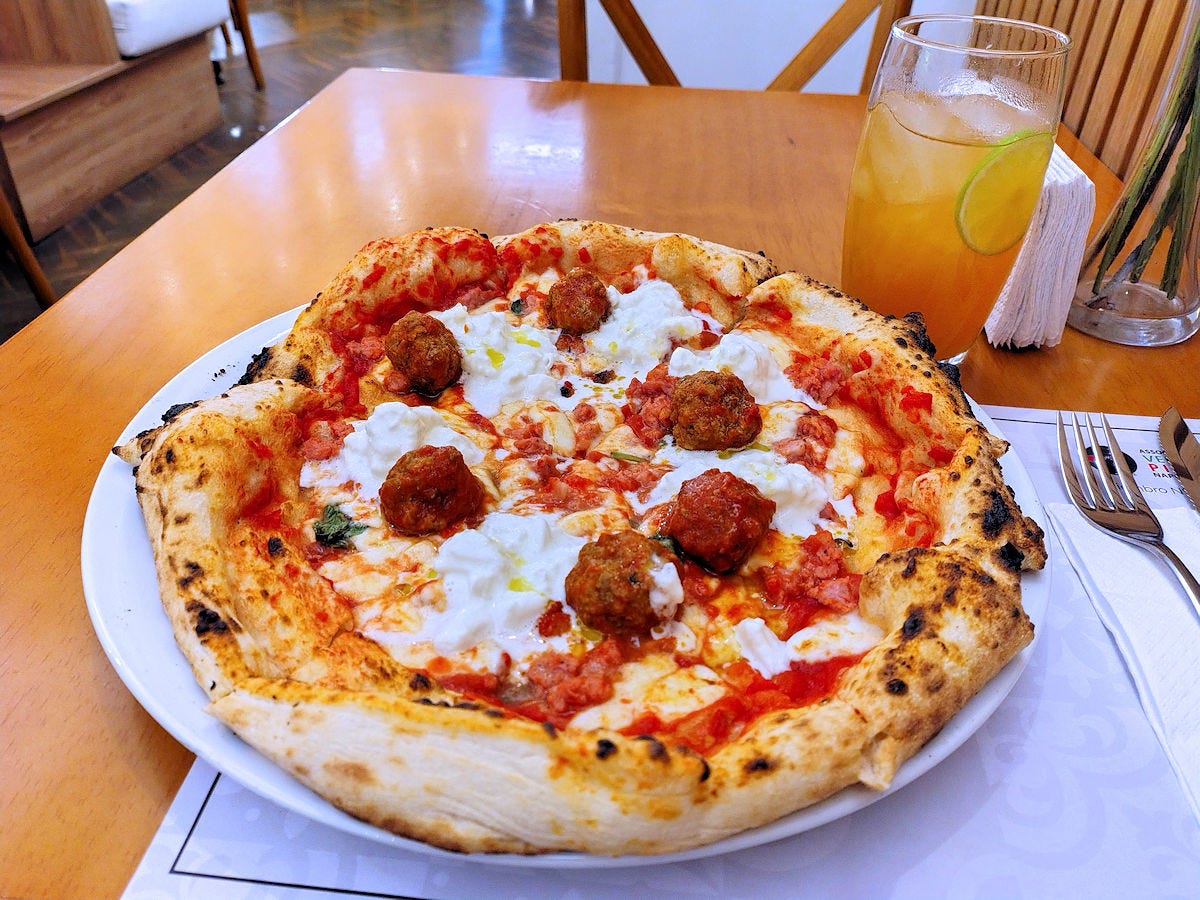
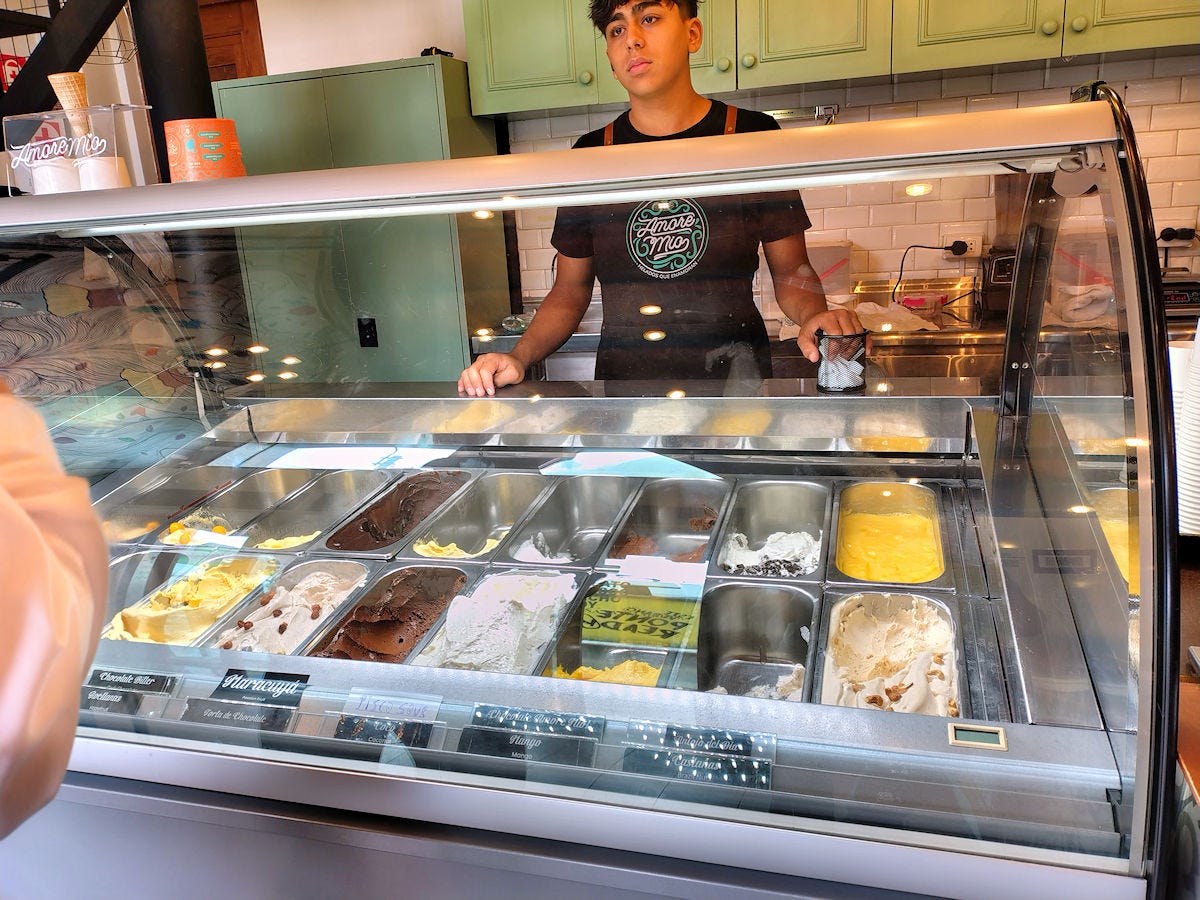
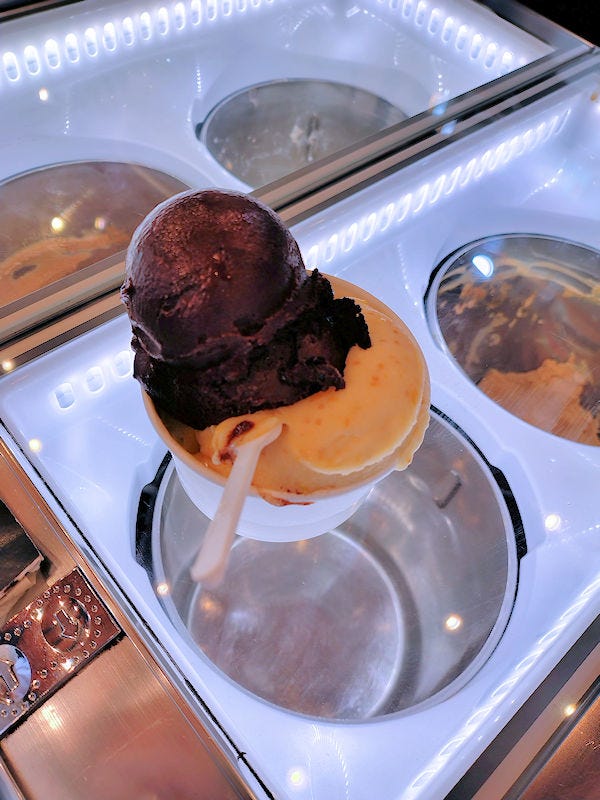
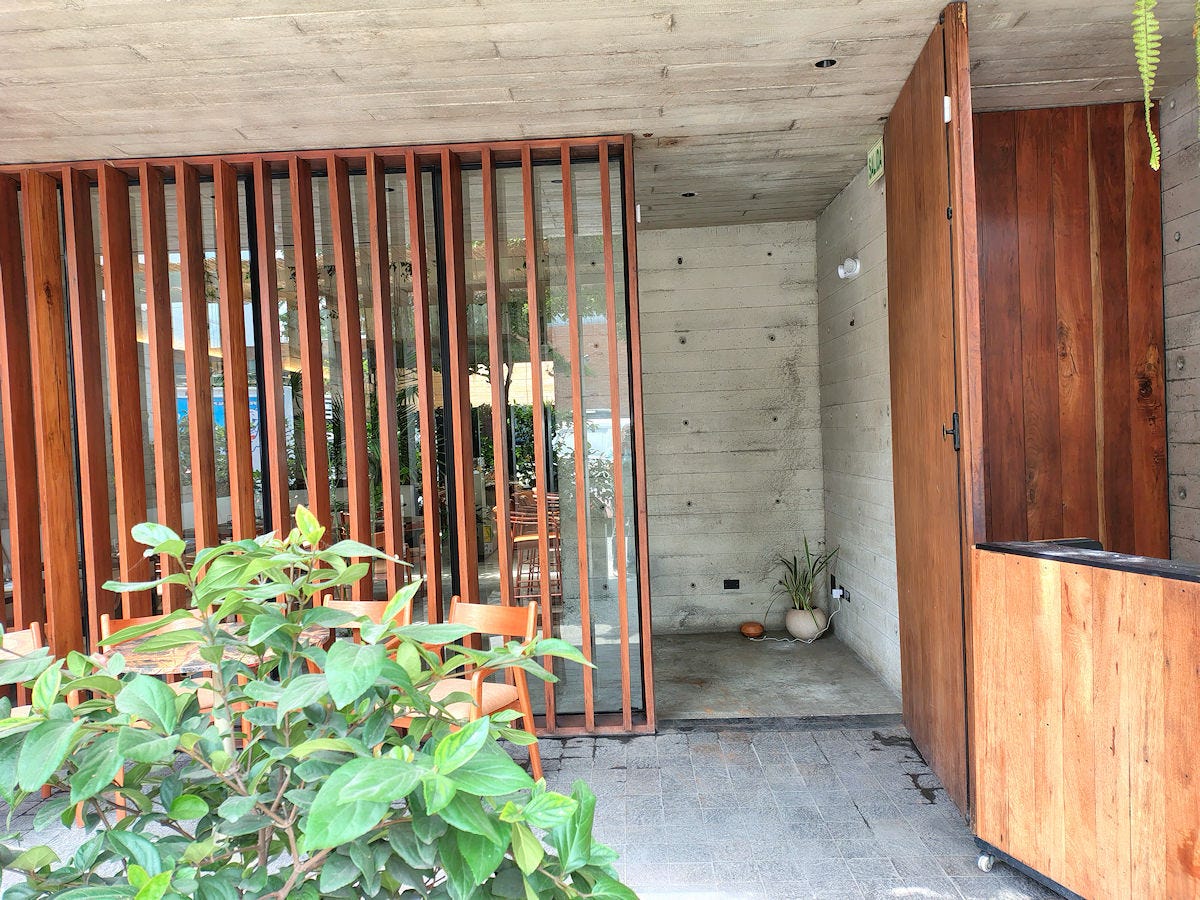
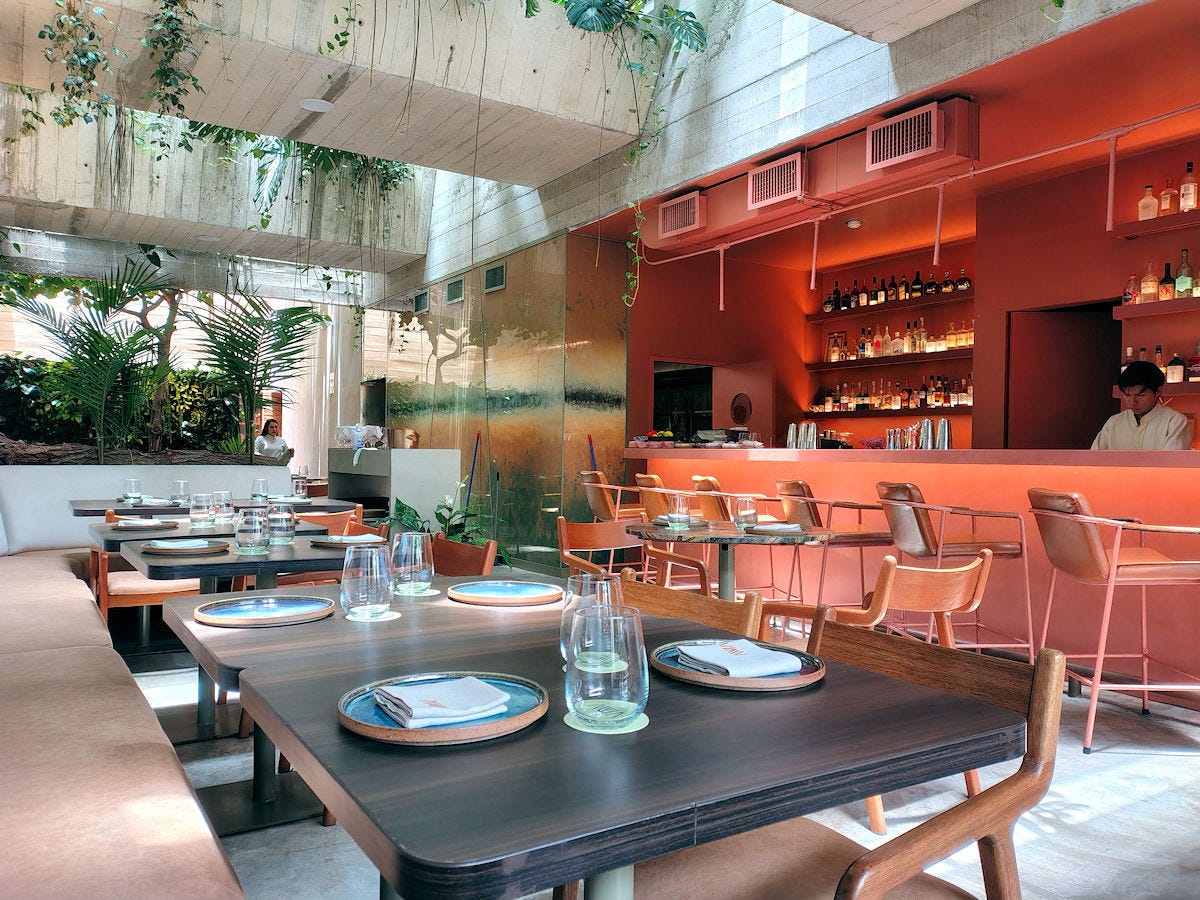
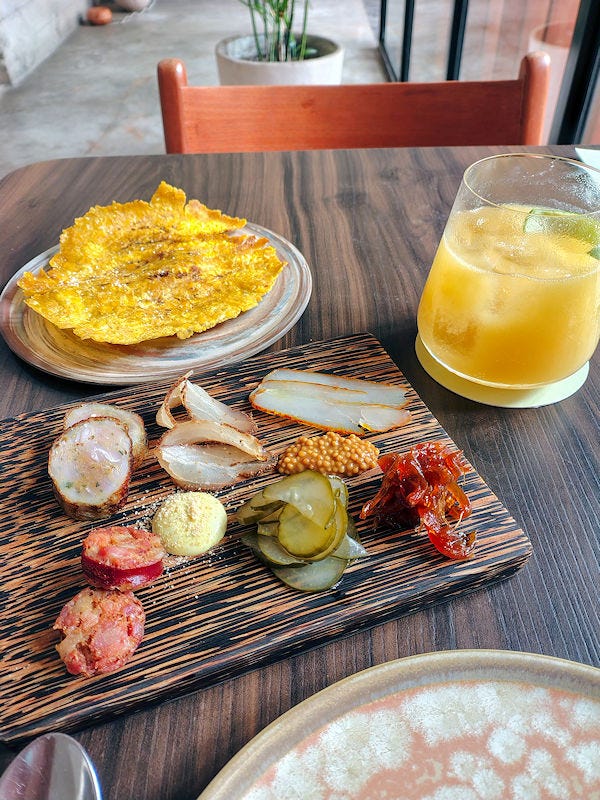
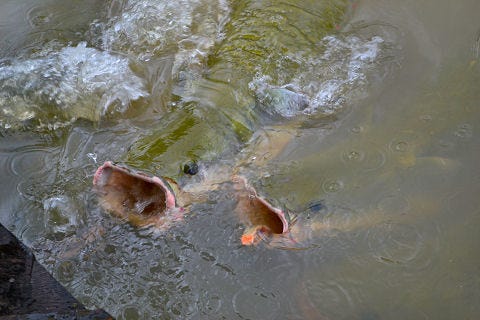
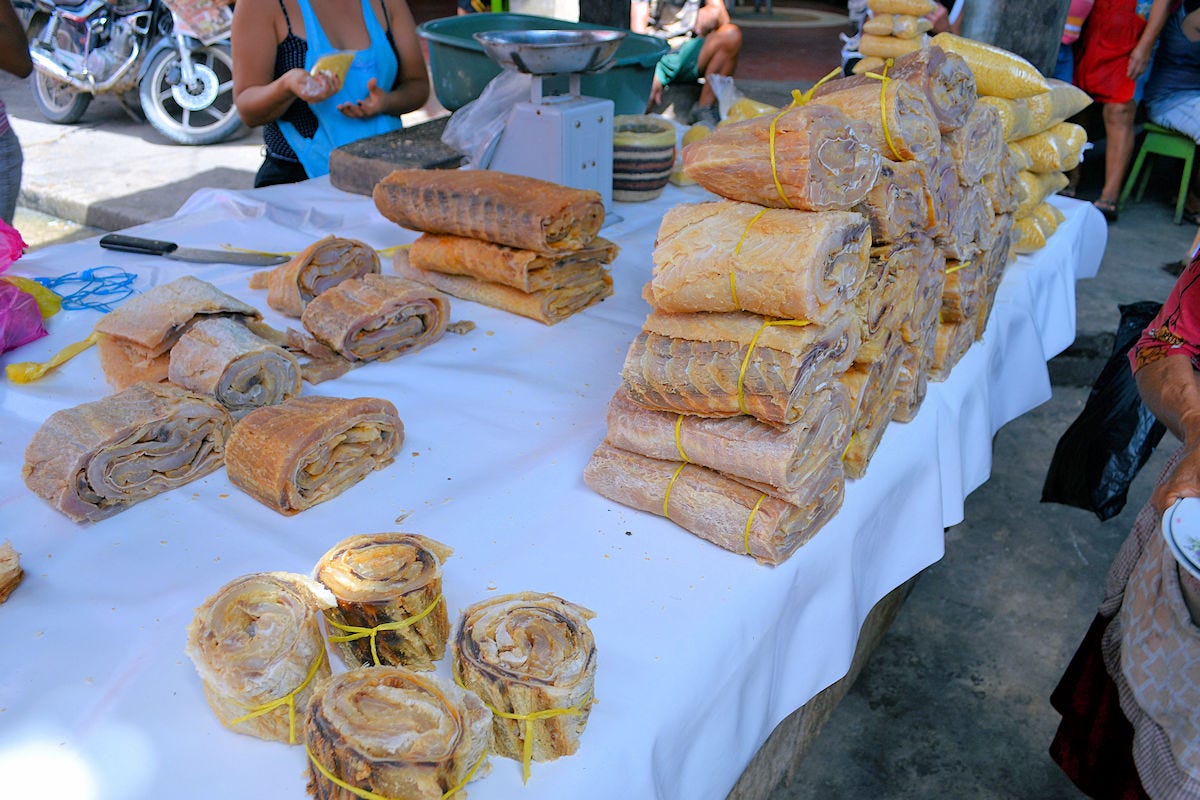
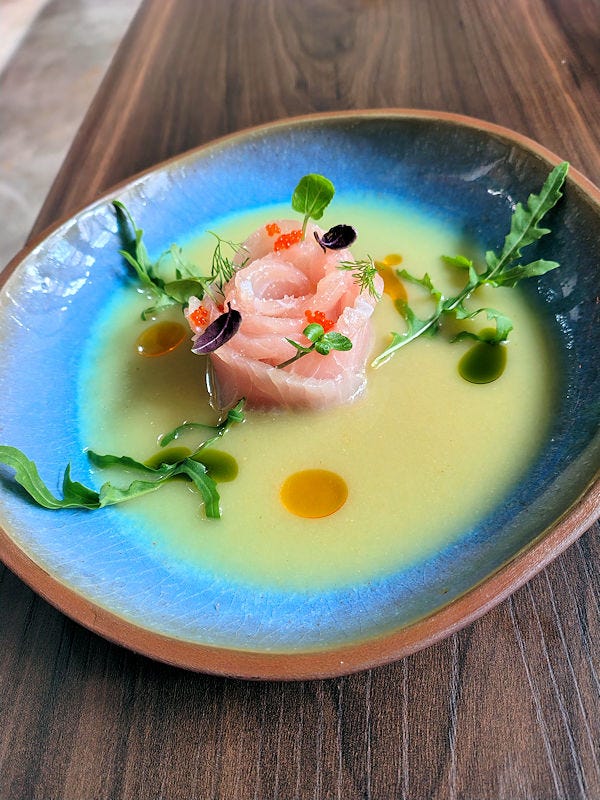
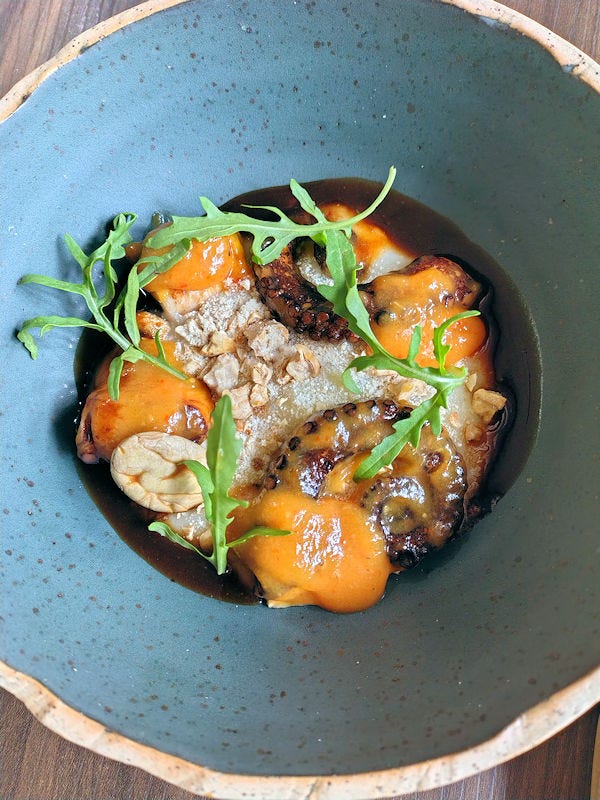
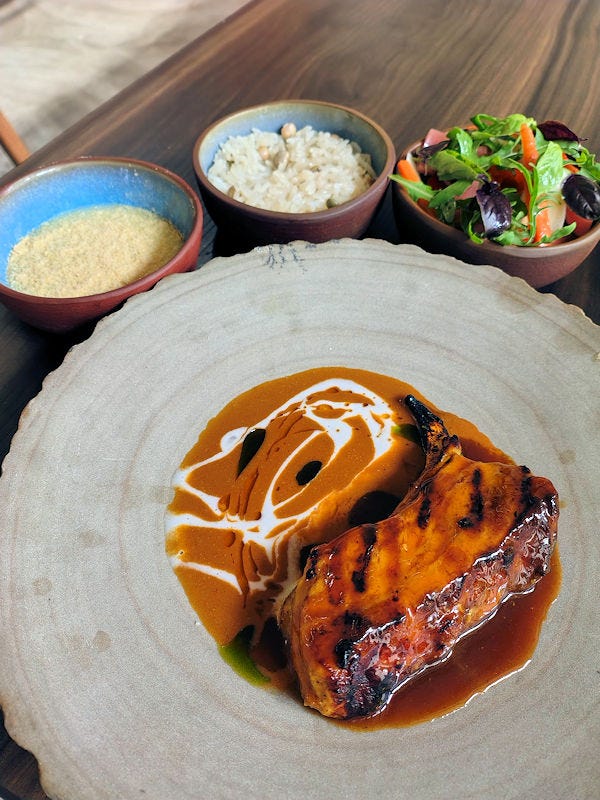
Thanks for sharing your trip with us, Dan. Really enjoyed your reflections, as usual.